At the Surface Navy Association's (SNA) 2018 National Symposium currently held near Washington DC, Lockheed Martin unveiled the design of the frigate it is proposing for the U.S. Navy FFG(X) requirement.
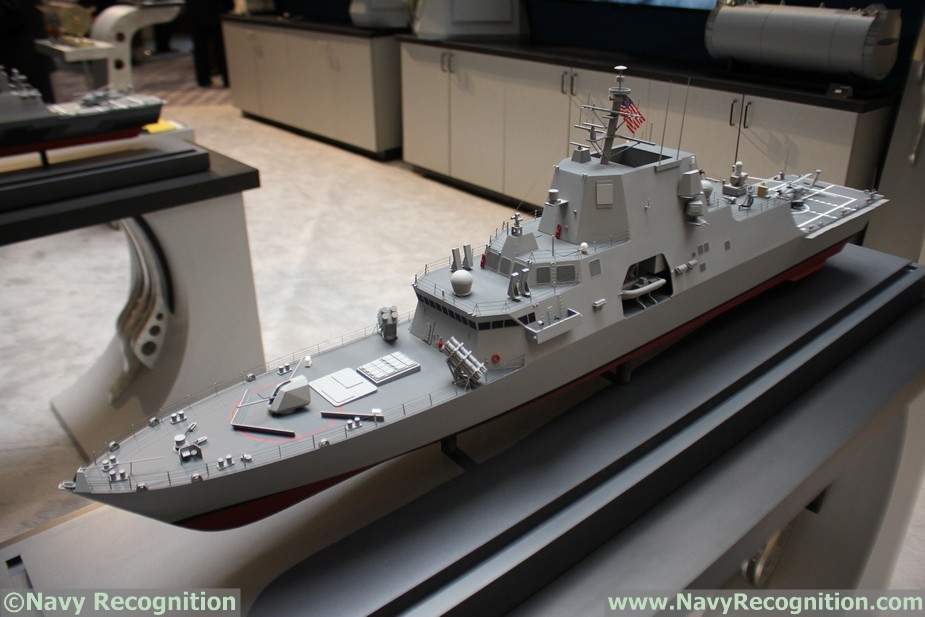 Lockheed Martin "Freedom-Variant" Frigate unveiled at SNA 2018
Lockheed Martin "Freedom-Variant" Frigate unveiled at SNA 2018
The US Department of Defense released a Request for Information (RFI) in July 2017 to let the industry know what the U.S. Navy is expecting from the FFG(X) Frigate. The RFI says, "A competition for FFG(X) is envisioned to consider existing parent designs for a Small Surface Combatant that can be modified to accommodate the specific capability requirements prescribed by the US Navy."
The U.S. Navy wants a frigate that can keep up with carrier strike groups as well as conduct missions on its own. “The FFG(X) will normally aggregate into strike groups and Large Surface Combatant led surface action groups but also possess the ability to robustly defend itself during conduct of independent operations while connected and contributing to the fleet tactical grid.” The U.S. Navy expects the frigate to be survivable in complex scenarios: "FFG(X) will perform its missions in complex electronic warfare and anti-ship missile threat environments".
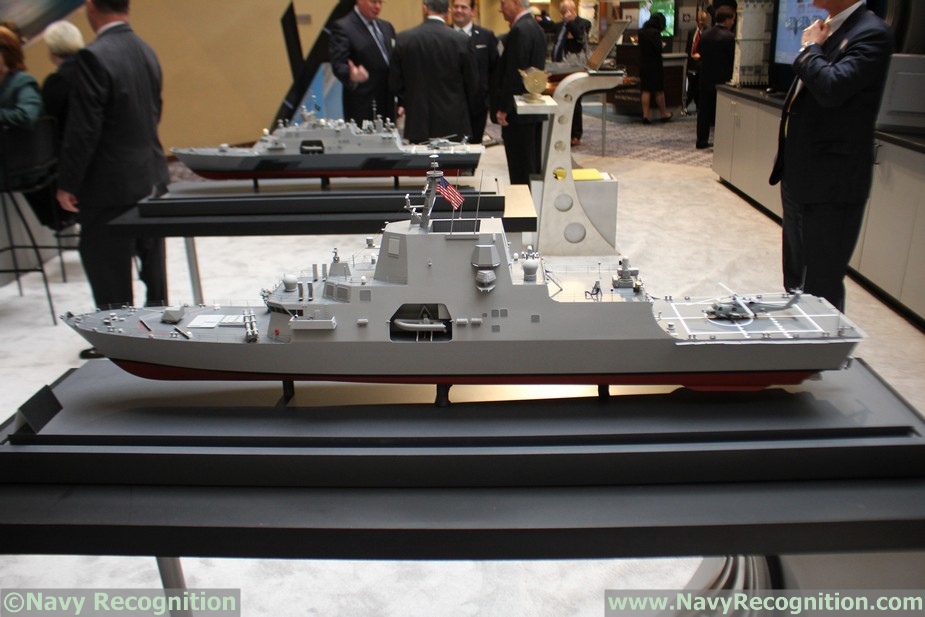 Lockheed Martin "Freedom-Variant" Frigate unveiled at SNA 2018
Lockheed Martin "Freedom-Variant" Frigate unveiled at SNA 2018
The new Frigate would likely replace the troubled, very modular, Littoral Combat Ships (LCS) for typical "frigate missions". The U.S. Navy is requesting the FFG(X) to conduct the following missions:
- Over the horizon anti-surface warfare (ASuW )
- Anti-submarine warfare (ASW)
- Independently escort logistics ship convoys
- Electronic warfare (EW)
- Electronic signals intelligence and collection (ELINT)
The frigate displacement wasn't mentioned in the RFI, but it is likely to be comprised between 4000 tons (if the design is to stay as close as possible to the LCS) and in excess of 6000 tons (in view of the requirements set by the U.S. Navy, which is particularly interested on how the shipbuilders can fit VLS for ESSM and Standard Missiles and how many).
The U.S. Navy intends to award a Detail Design and Construction contract for the first FFG(X) in 2020. The full RFI can be found at this link.
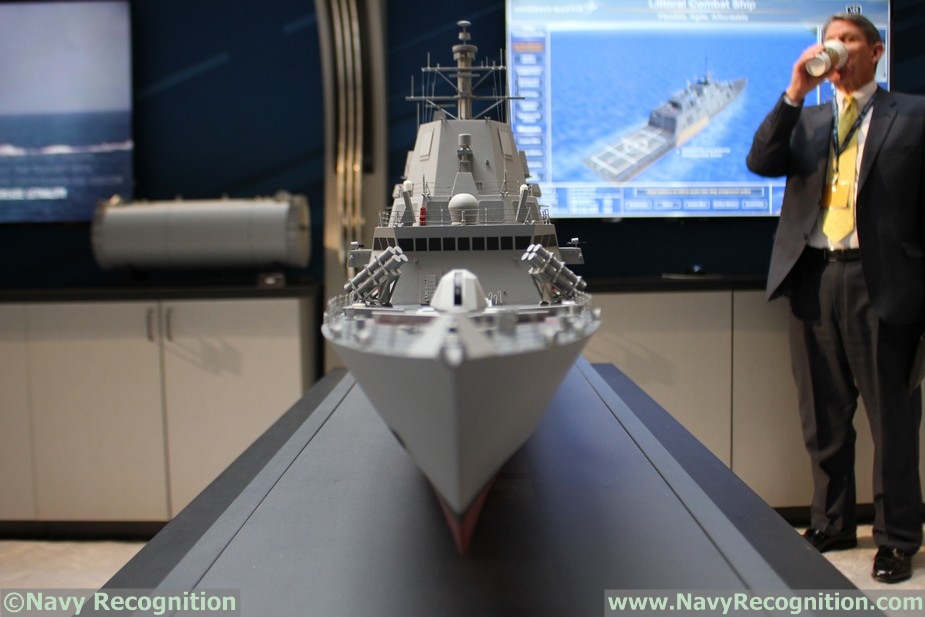 Lockheed Martin "Freedom-Variant" Frigate unveiled at SNA 2018
Lockheed Martin "Freedom-Variant" Frigate unveiled at SNA 2018
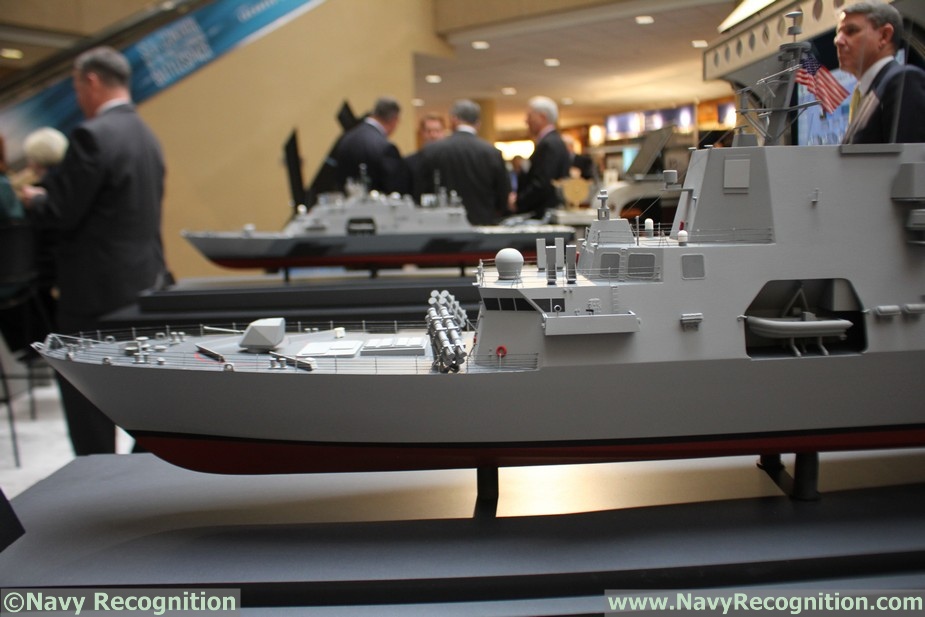 Lockheed Martin "Freedom-Variant" Frigate unveiled at SNA 2018
Lockheed Martin "Freedom-Variant" Frigate unveiled at SNA 2018
The scale model unveiled at SNA 2018 features 8x anti-ship missiles fitted forward, below the bridge. Moving away from the bridge and toward the bow there 16x Mk 41 VLS cells for ESSM and/or Standard Missiles. There are also two spaces intended for Surface to Surface Missile Module (SSMM) with Longbow Hellfire missiles similar to what is fitted aboard LCS (those are intended to counter swarm attacks). The main gun is a BAE Systems Bofors Mk110 57mm as per the RFI.
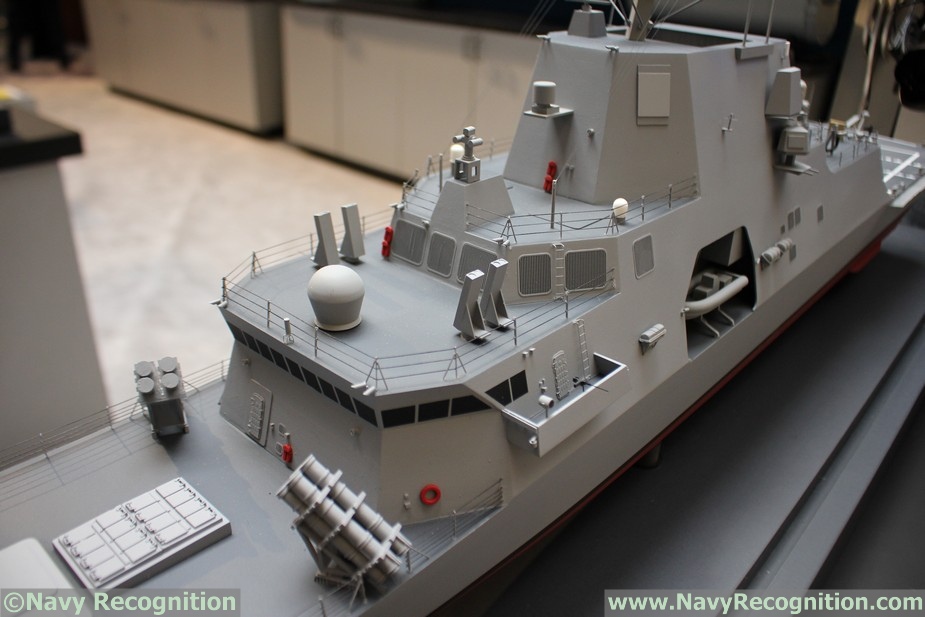 Lockheed Martin "Freedom-Variant" Frigate unveiled at SNA 2018
Lockheed Martin "Freedom-Variant" Frigate unveiled at SNA 2018
Compared to the Freedom-class, the bridge and superstructre of the frigate have been completely redesigned. The bridge face is less slanted / more vertical and the superstructure forms three steps, the last one being significantly higher. This is to accommodate Raytheon's Enterprise Air Surveillance Radar (EASR). There four Nulka decoy launchers directly on top of the bridge. SEWIP electronic warfare antennas are fitted on the port and starboard sides of the main mast structure. Two larger antennas of unknown type are fitted directly above the SEWIP.
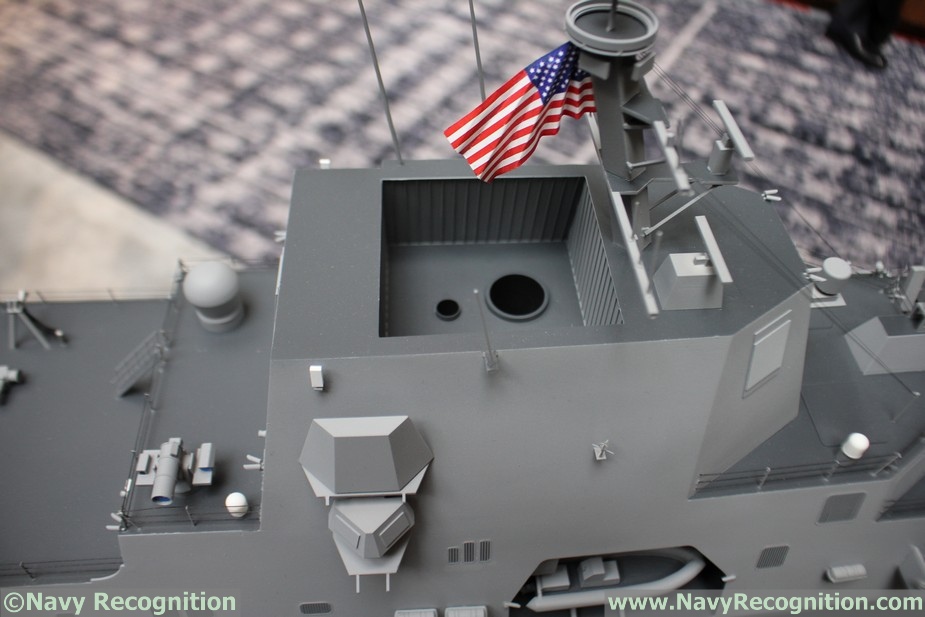 Lockheed Martin "Freedom-Variant" Frigate unveiled at SNA 2018
Lockheed Martin "Freedom-Variant" Frigate unveiled at SNA 2018
The funnels are hidden deep inside the main structure. This is likely to lower the infra-red signature of the ship. Another explanation could be that the structure was raised in order to accommodate the EASR arrays.
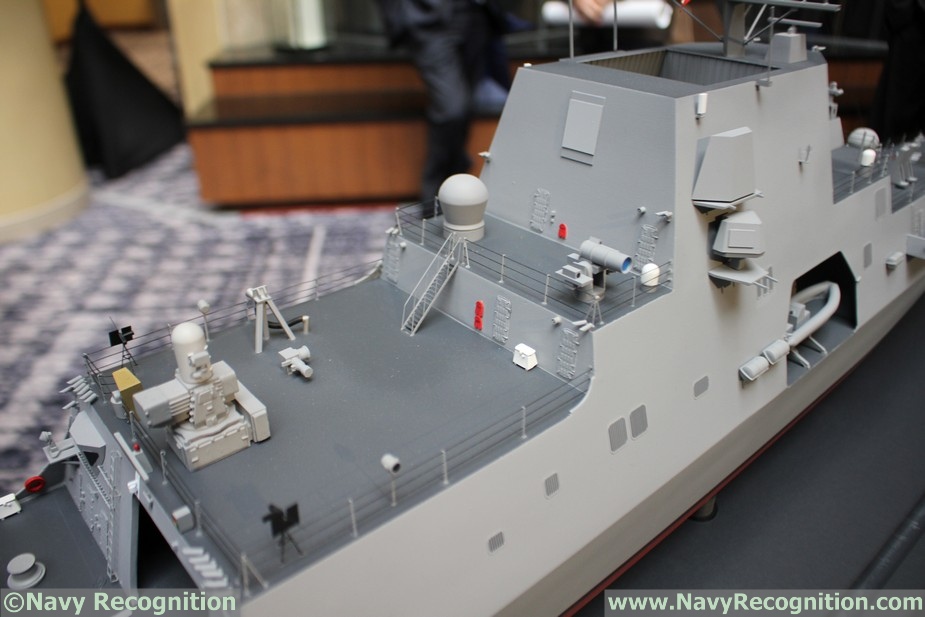 Lockheed Martin "Freedom-Variant" Frigate unveiled at SNA 2018
Lockheed Martin "Freedom-Variant" Frigate unveiled at SNA 2018
As we progress towards the stern of the ship, note the presence of a laser weapon system on the starboard side of the ship. There is a SeaRAM launcher on top of the helicopter hangar as per the Navy RFI.
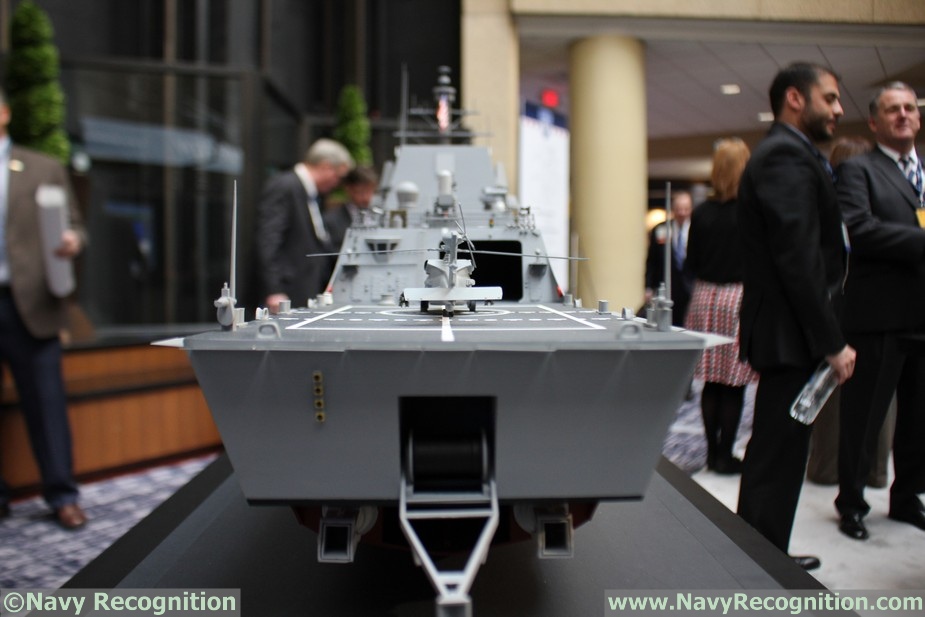 Lockheed Martin "Freedom-Variant" Frigate unveiled at SNA 2018
Lockheed Martin "Freedom-Variant" Frigate unveiled at SNA 2018
The propulsion system remains unchanged with 4x waterjets. However we noted one last addition on the frigate's hull: the presence of bilge keels. They increase hydrodynamic resistance to rolling, making the ship roll less. Bilge keels are passive stability systems.
Lockheed Martin launched a "Frigate" page on its website for SNA 2018. Little information is provided except for this text:
With rapidly evolving threats, world markets need to confront different types of bulls and bears. That’s why Lockheed Martin is evolving its Freedom-variant ship design to confront modern threats to maritime and economic security. The Freedom-variant Frigate offers planners and commanders the strength and affordability needed to rapidly rebuild the U.S. Navy fleet and guarantee freedom of the seas for decades to come.
Lockheed partners for this project include Fincantieri Marinette Marine and Gibbs & Cox.










